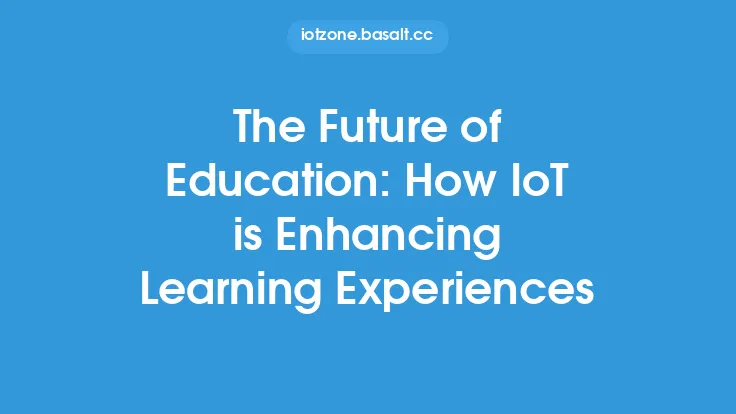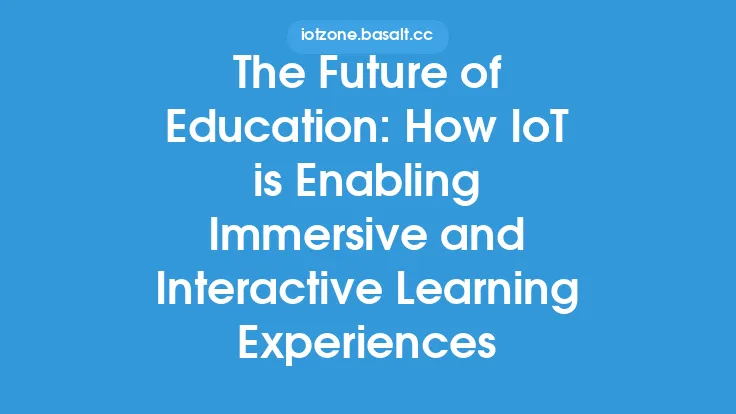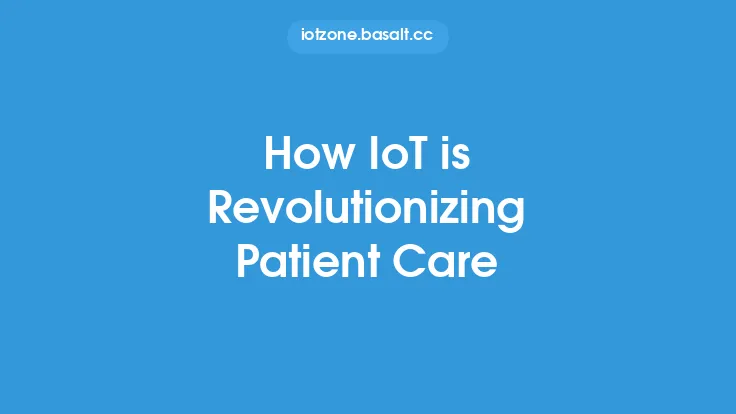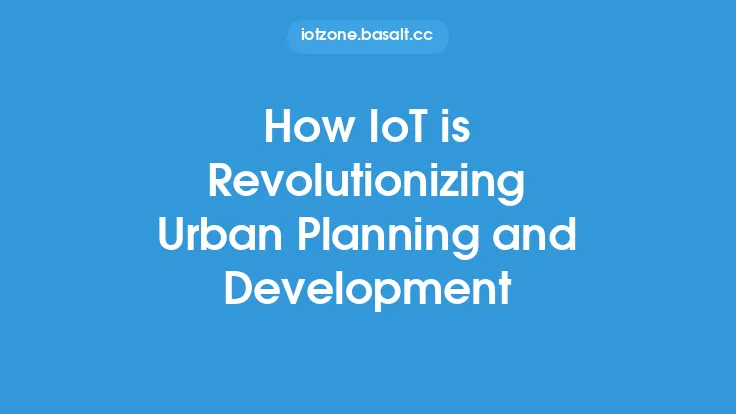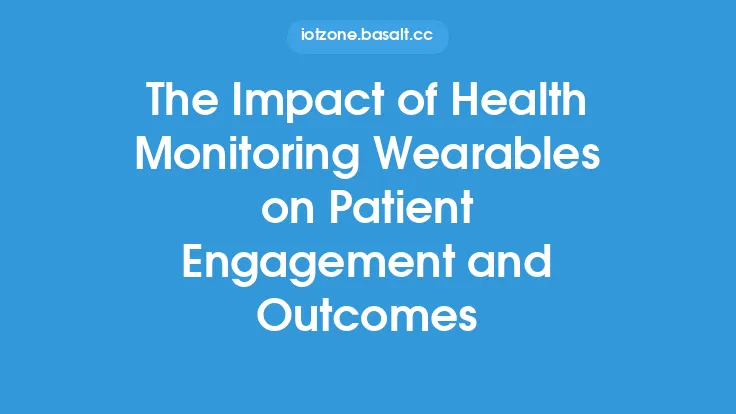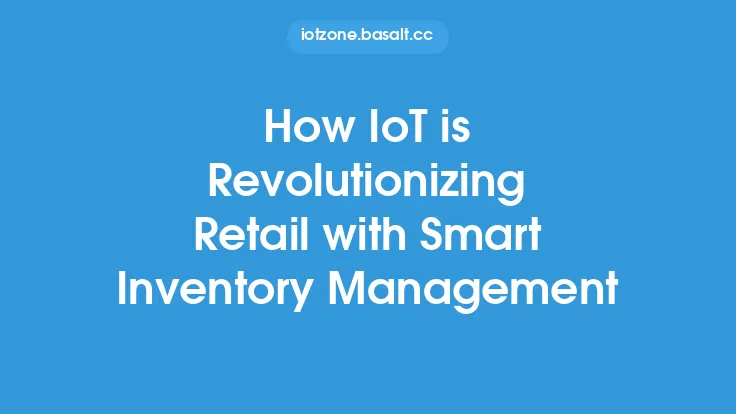The integration of Internet of Things (IoT) technology in educational settings is transforming the way students learn and interact with their environment. By leveraging IoT devices and sensors, educators can create immersive, interactive, and personalized learning experiences that enhance student engagement and improve learning outcomes. This revolution in the classroom is made possible by the convergence of various technologies, including wireless communication, sensor networks, and data analytics.
Introduction to IoT in the Classroom
IoT in the classroom refers to the use of internet-connected devices and sensors to collect and analyze data, which is then used to create a more engaging, efficient, and effective learning environment. This can include everything from simple sensors that monitor temperature and lighting levels to more complex systems that track student behavior and performance. By harnessing the power of IoT, educators can create a more dynamic and responsive learning environment that adapts to the needs of individual students.
Key Components of IoT in the Classroom
Several key components are necessary to create an IoT-enabled classroom. These include:
- Sensors and Devices: These are the physical components that collect data and interact with the environment. Examples include temperature sensors, motion detectors, and cameras.
- Communication Protocols: These define how devices communicate with each other and with the internet. Common protocols include Wi-Fi, Bluetooth, and Zigbee.
- Data Analytics: This refers to the process of analyzing the data collected by IoT devices to gain insights and make informed decisions.
- Cloud Computing: This provides a platform for storing, processing, and analyzing the large amounts of data generated by IoT devices.
Applications of IoT in the Classroom
IoT technology has a wide range of applications in the classroom, including:
- Smart Boards and Displays: These are interactive displays that can be used to present information, facilitate collaboration, and provide real-time feedback.
- Virtual and Augmented Reality: These technologies can be used to create immersive, interactive learning experiences that simulate real-world environments and scenarios.
- Automated Attendance and Behavior Tracking: IoT devices can be used to track student attendance and behavior, providing valuable insights for educators and administrators.
- Energy Efficiency and Sustainability: IoT sensors can be used to monitor and optimize energy usage, reducing waste and promoting sustainability.
Benefits of IoT in the Classroom
The integration of IoT technology in the classroom has numerous benefits, including:
- Enhanced Student Engagement: IoT-enabled learning experiences can be more interactive, immersive, and engaging, leading to increased student motivation and participation.
- Improved Learning Outcomes: By providing personalized, real-time feedback and adapting to individual learning styles, IoT technology can improve student learning outcomes and academic achievement.
- Increased Efficiency: IoT devices can automate routine tasks, such as attendance tracking and data collection, freeing up educators to focus on teaching and mentoring.
- Better Decision Making: The data analytics capabilities of IoT technology provide educators and administrators with valuable insights, enabling them to make informed decisions about curriculum development, resource allocation, and policy implementation.
Challenges and Limitations of IoT in the Classroom
While IoT technology has the potential to revolutionize the classroom, there are several challenges and limitations that must be addressed, including:
- Infrastructure and Cost: The implementation of IoT technology requires significant investment in infrastructure, including devices, sensors, and networking equipment.
- Data Security and Privacy: The collection and analysis of student data raise concerns about security, privacy, and ethics.
- Teacher Training and Support: Educators must be trained and supported to effectively integrate IoT technology into their teaching practices.
- Equity and Access: The adoption of IoT technology can exacerbate existing inequalities in education, particularly in underserved or under-resourced communities.
Future Directions for IoT in the Classroom
As IoT technology continues to evolve and improve, we can expect to see even more innovative applications in the classroom. Some potential future directions include:
- Artificial Intelligence and Machine Learning: The integration of AI and ML algorithms can enable IoT devices to learn and adapt to individual students' needs and preferences.
- Internet of Bodies (IoB): The development of IoB technology, which involves the use of wearable and implantable devices, can provide new insights into student behavior and physiology.
- Extended Reality (XR): The convergence of virtual, augmented, and mixed reality technologies can create even more immersive and interactive learning experiences.
- Quantum Computing: The advent of quantum computing can enable faster, more secure, and more efficient processing of IoT data, leading to new breakthroughs in education and research.
Conclusion
The integration of IoT technology in the classroom has the potential to revolutionize the way students learn and interact with their environment. By leveraging IoT devices and sensors, educators can create immersive, interactive, and personalized learning experiences that enhance student engagement and improve learning outcomes. While there are challenges and limitations to be addressed, the benefits of IoT in the classroom are clear, and its future directions are exciting and full of promise. As IoT technology continues to evolve and improve, we can expect to see even more innovative applications in education, leading to better learning outcomes, increased efficiency, and improved decision making.
